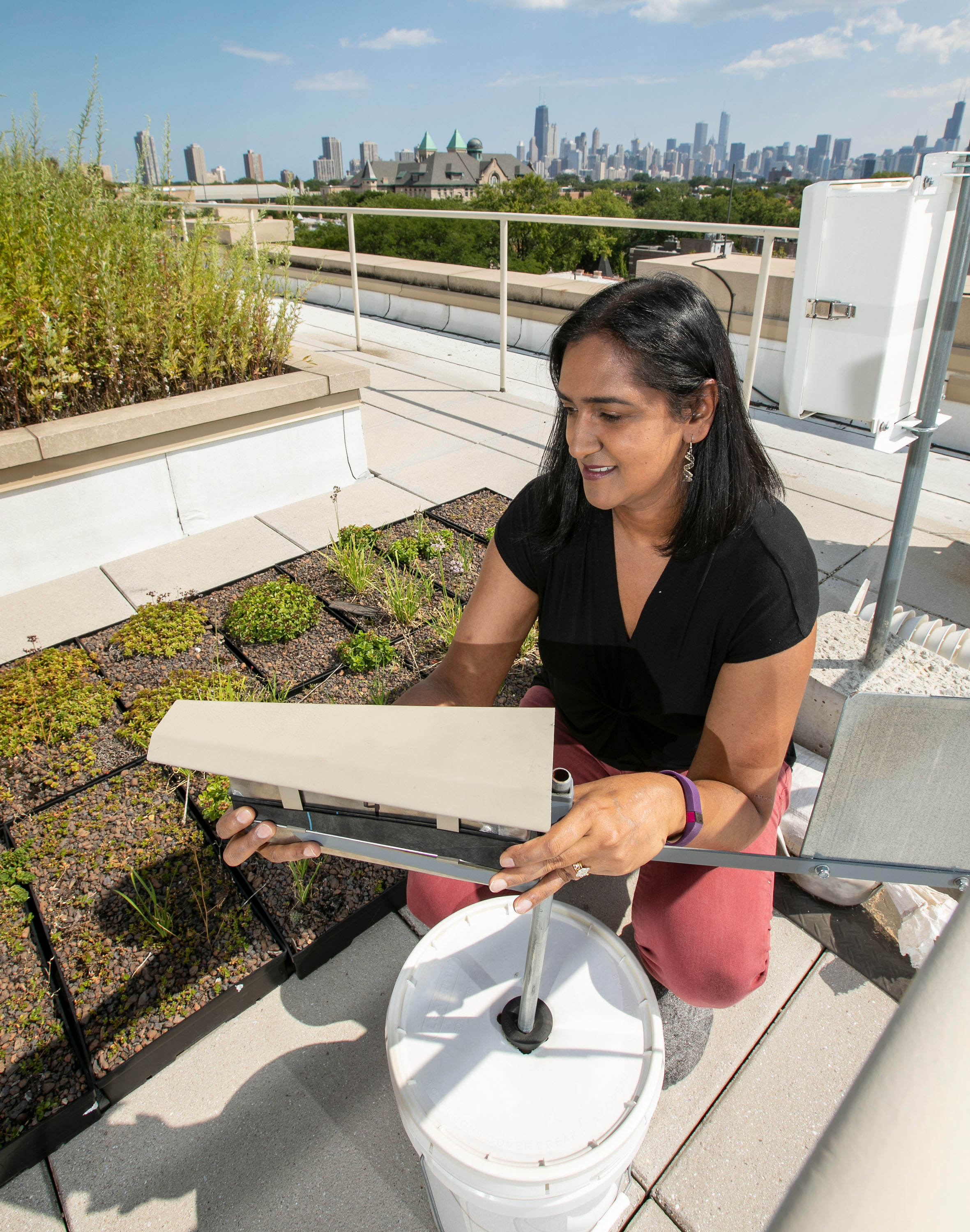Trait-based aerial dispersal of arbuscular mycorrhizal fungi
Assistant professor Bala Chaudhary sets up a dust collection box on the green roof high atop the McGowan South building, Wednesday, Aug. 22, 2018, as she continue her research studying urban mycorrhizas. Chaudhary, who teaches environmental science and studies at DePaul University's College of Science and Health, studies the influence of fungi on green roofs and their potential influence on green roof ecosystem services and urban biodiversity. (DePaul University/Jamie Moncrief)
Bala Chaudhary (DePaul University, Chicago): Dispersal is a fundamental process influencing both large-scale biogeographical patterns and local community assembly, but considerable knowledge gaps exist for dispersal of arbuscular mycorrhizas, among one of Earth’s most common symbioses. Variation in dispersal is predicted among arbuscular mycorrhizal (AM) fungal taxa due to variation in spore traits, but these predictions have yet to be empirically tested. Using passive dust collectors, we made month-long collections of aerial AM fungi for 12 months, measuring functional traits for spores and assessing aerial AM fungal community structure with high-throughput Illumina sequencing. Aerial spores were numerous, peaking from Aug-Nov, likely due to temporal patterns in agricultural soil disturbance and host plant phenology. Community structure also shifted among seasons and aerial spore traits differed from those of spores in soil. These data inform AM fungal dispersal conceptual models, and, using trait-based methods, guide predictions about how stochastic processes drive AM fungal biogeography and community structure.
